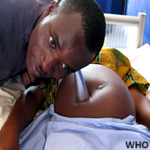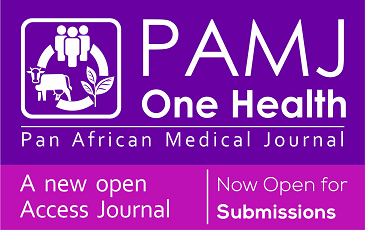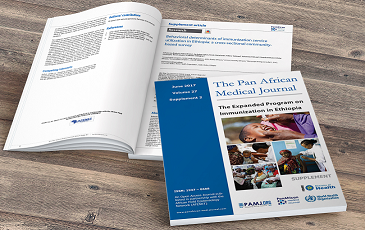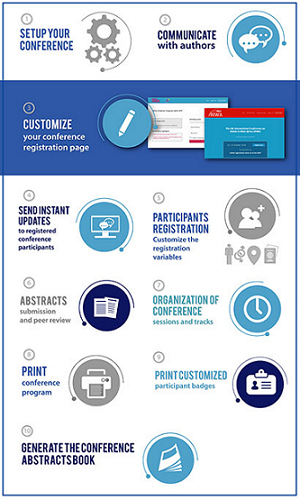Antibiotic use in urological surgeries: a six years review at Muhimbili National Hospital, Dar es salaam-Tanzania
Obadia Nyongole, Larry Akoko, Ally Mwanga, Mabula Mchembe, Benjamin Kamala, Naboth Mbembati
Corresponding author: Obadia Nyongole, Department of Surgery, School of Medicine, Muhimbili University of Health and Allied Sciences 
Received: 02 Feb 2015 - Accepted: 20 Oct 2015 - Published: 11 Nov 2015
Domain: Clinical medicine
Keywords: Antibiotics, urological surgeries, Tanzania
©Obadia Nyongole et al. Pan African Medical Journal (ISSN: 1937-8688). This is an Open Access article distributed under the terms of the Creative Commons Attribution International 4.0 License (https://creativecommons.org/licenses/by/4.0/), which permits unrestricted use, distribution, and reproduction in any medium, provided the original work is properly cited.
Cite this article: Obadia Nyongole et al. Antibiotic use in urological surgeries: a six years review at Muhimbili National Hospital, Dar es salaam-Tanzania. Pan African Medical Journal. 2015;22:226. [doi: 10.11604/pamj.2015.22.226.6253]
Available online at: https://www.panafrican-med-journal.com/content/article/22/226/full
Original article 
Antibiotic use in urological surgeries: a six years review at Muhimbili National Hospital, Dar es salaam-Tanzania
Antibiotic use in urological surgeries: a six years review at Muhimbili National Hospital, Dar es salaam-Tanzania
Obadia Nyongole1,&, Larry Akoko1, Ally Mwanga1, Mabula Mchembe1, Benjamin Kamala2, Naboth Mbembati1
1Department of Surgery, School of Medicine, Muhimbili University of Health and Allied Sciences, Tanzania, 2Department of community Medicine, Hubert Kairuki Memorial University, Dar es Salaam, Tanzania
&Corresponding author
Obadia Nyongole, Department of Surgery, School of Medicine, Muhimbili University of Health and Allied Sciences
Introduction: antimicrobial prophylaxis for urologic procedures is a major issue, as potential advantages of antibiotic administration should be carefully weighed against potential side effects, microbial resistance, and health care costs. This study aimed to review a six years trend of antibiotic use in urological surgeries at Muhimbili National Hospital (MNH) being an experience in a typical third world environment.
Methods: this was a six years hospital based descriptive, retrospective study conducted of which all case notes of urological patients operated on in between January 2007 to December, 2012 were reviewed by using a structured data collecting tool. The data were analyzed using SPSS software.
Results: male patients were the majority at 62% (450). The age range was 0 - 90 years, with a mean of 30 ± 22.09. Among the urological surgeries done at MNH 86.5% (628) received prophylactic antibiotics regardless of the type surgery done. Majority 63.7% (463) received antibiotics during induction. Ceftriaxone was the commonly given antibiotic regardless of the type of urological surgery done. Most of patients (86.4%) were given antibiotics for five days regardless whether it was for prophylactic or treatment intention.
Conclusion: antibiotic use is still a challenge at our hospital with over use of prophylactic antibiotics without obvious indications. Prolonged use of prophylactic antibiotics beyond five days was the main finding. Ceftriaxone was the most given antibiotic regardless of the urological surgery done and its level of contamination. Antibiotic stewardship needs to be addressed urgently to avoid serious drug resistances leaving alone the cost implication.
Antibiotics are synthetic molecules that can destroy or inhibit the growth of microorganisms without harming the host. They can be used for prophylactic purposes to reduce the incidence of postoperative infection of which duration should not exceed 24hrs in many procedures given one hour prior to incision. Also antibiotics for treatment purposes are given when an established infection has been identified.Antibiotic prophylaxis is a brief course of antibiotics administered before or at the start of an intervention and used to minimize the infectious complications resulting from diagnostic and therapeutic interventions. While the rationale for the use of antibiotics is well accepted, possible side-effects and development of microbial resistance patterns are potential risks. Therefore, an antibiotic prophylaxis policy should be well considered and, ideally, based on high levels of evidence. Urology is a surgical speciality which has under-gone many changes in the last decade. Surgical procedures have mainly shifted from open to endoscopic and laparoscopic procedures, and nowadays, a greater number of elderly patients or carriers of temporary urinary derivations are being operated on. These developments can influence the choice of antibiotic prophylaxis policy. Although it is common practice to administer antibiotic prophylaxis in many urologic procedures, there is still little evidence for the use of antibiotic prophylaxis in most of these procedures. This is mainly due to the lack of well-designed studies as well as the lack of clear definitions of favourable outcome parameters. The question remains to what extent antibiotic prophylaxis is beneficial in the different urologic procedures. Various authors have addressed this issue in reviews in recent years [1-5]. Also, the European Association of Urology (EAU) has recently updated the guideline "Management of urinary and male genital tract infections", including a chapter on perioperative antibacterial prophylaxis in urology. However with the exception of the transurethral resection of the prostate (TURP) [6-14], some of the recommendations in these reviews and guidelines are supported by evidence gathered in a structured systematic review. Surgical wound classification in the categories clean, clean-contaminated, contaminated and dirty seems just as relevant for urologic surgery as for general surgery [15-16]. In this way assessing the pre-intervention surgical wound class, an estimate can be made of the need for antibiotic prophylaxis during surgery. Clean surgery involves uninfected tissues without opening of the urinary tract and with primary closure of the wound. In clean contaminated surgery, the urinary tract is entered under controlled conditions, without the presence of infected tissues or bacteriuria. Surgery with use of bowel tissue is also classified as clean-contaminated. The presence of a non treated infection, including UTI, should be considered as contaminated urologic surgery. When pus is present, the surgery is labelled dirty. Implantation of prosthesis material is not classified as above. Since infectious complications are potentially serious when involving prosthesis material, antibiotic coverage is advocated irrespective of surgical class [2, 12, 16]. Derived from the surgical literature and not supported by urologic evidence, there is no indication for antibiotic prophylaxis in clean surgery, whereas there is an indication in clean-contaminated and prosthetic surgery. Contaminated and dirty surgery should be covered by therapeutic antibiotics instead of prophylactic dosages. Our study aimed to review a six years trend of antibiotic use in urological surgeries at Muhimbili National Hospital (MNH) being an experience in a typical third world environment.
This was a retrospective study at Muhimbili National Hospital (MNH)- medical record department from November 2013 to April 2014. All case notes of urological patients operated on in between January 2007 to December, 2012 was included in the study.
Inclusion criteria
All available case notes of operated patients in urology unit during the period of 2007 to 2012 were eligible for use in this study.
Exclusion criteria
Case notes with incomplete information were not considered in some of the analysis where such missing variable are imperative.
Data processing and analysis
A structured questionnaire was used to collect data from patient's case notes. An electronically generated medical detail of all operated patients was obtained per year. The details that were possible to obtain included the age, sex, file number, date of operation and type of operation. From this, patients who were operated under urology unit were identified and their case notes retrieved. Data coding was done, cleansed and entered into computer software for storage and analysis using SPSS version 18 statistical program. Frequencies were run for all categorical variables and patterns of surgery and their outcome described. Mean and standard deviation were used to summarize continuous variables.
Ethical issues
Ethical clearance to conduct the study was obtained from the Institutional Review Board (IRB) at Muhimbili University of Health and Allied Sciences (MUHAS) REF.No.MU/DRP/AEC/Vol.XVIII/22 of 30th October 2013 and a separate permission to conduct the study was also obtained from the Executive Director of Muhimbili National Hospital (MNH). Direct patient identifiers were not used except for file numbers during initial data collection; thereafter the questionnaires were coded for further analysis.
Study limitations
This study was done at Muhimbili National Hospital which is the only national referral hospital located in the Centre of Dar es Salaam city, thus the findings may reflect a true image of the trend of antibiotic use in urological surgeries in Dar es Salaam and country. At large but incomplete documentation might impair the image.
A total 726 case notes of patients who underwent urological surgeries during the study period of six years were reviewed. The age range was 0 - 90 years, with a mean of 30 ± 22.09 with male predominance giving a ratio of 6.4: 1. Cystoscopy 260 (36%) was the most commonly done urological surgery followed by prostatectomy 154 (21%) (Table 1). Most of our patients 589 (81.1%) were given antibiotics regardless of the type urological surgeries. Eighty seven point four percent of clean contaminated urological surgeries were given prophylactic antibiotics also those who had clean urological surgeries 265 (74.6%) were given antibiotics. There were neither contaminated nor dirty urological surgeries done (Table 2). Majority of our patients 63.7% (463) received antibiotics during induction. The commonly given antibiotics were Ceftriaxone combined with metronidazole 37.5% and ceftriaxone alone was given in 46.1% with Gentamycin being given alone in 6% only. Ceftriaxone was the commonly given antibiotic regardless of the type of urological surgery done (Table 3).
In this study we found that urological surgeries are predominantly done in male with a wide range of ages. Most of our patients 589 (81.1%) were given antibiotics regardless of the type urological surgeries this is similar to the findings of others studies in Europe, United states and local studies that addresses the use of antibiotic prophylaxis in urologic interventions. Contrary to the recommendation from others studies that Antibiotics for most urologic interventions having only moderate to low evidence for the use of antibiotic prophylaxis, with the exception of TURP and prostate biopsy. Strong evidence supports the use of short-term prophylaxis for TURP, and this evidence is moderate to high for prostate biopsy. The main point of consideration when assessing the benefit of antibiotic prophylaxis is what to consider as a favourable outcome. In our study Eighty seven point four percent of clean contaminated urological surgeries were given prophylactic antibiotics also those who had clean urological surgeries 265 (74.6%) were given antibiotics [1, 3-5, 12, 17]. Our study did not explore on why patients were given antibiotics uphazardly but probably clinicians' thoughts are to decrease of post intervention bacteriuria, or decrease of symptomatic UTIs or other infectious complications' While the aim of preventing symptomatic UTIs and other serious infectious complications seems evident, the need to prevent asymptomatic bacteriuria remains questionable. Asymptomatic bacteriuria is often of no clinical importance and resolves spontaneously in many cases as the findings of other studies elsewhere [1, 3-11, 13, 18]. This being a retrospective study, we could not asses the outcomes of those patients post urological intervention therefore we could not find high evidence supporting the use of antibiotic prophylaxis in urologic interventions to prevent complications such as UTI including in those who had TURP done as it was found out in other studies that no enough evidence supports the systematic use of antibiotic prophylaxis to prevent UTIs in the rest of the procedures. However, when performing case notes review, we realized not only that variations in duration, antibiotic agent, or dose of what was considered "antibiotic prophylaxis" existed, but also that variables of importance in some patients who were discharged with urethral catheters or stents were insufficiently explored as those increases the risk of a post-operative infectious complication and, therefore, the need for an adequate antibiotic prophylaxis even in cases of low evidence for benefit. Still, good clinical practice should drive the decision in that circumstance [5, 10, 19, 20]. We found that Ceftriaxone was the commonly given antibiotic regardless of the type of urological surgery done similarly to the findings of other studies whereby overuse of third generation cephalosporin was noted, from this clinicians should keep in mind that antibiotic prophylaxis is only one of the various measures to prevent post-intervention infectious complications. Antibiotic prophylaxis cannot compensate for inadequate operative care, and, therefore, general recommendations for prevention of surgical site infections should be followed [1, 3-7, 21, 22].
Antibiotic use is still a challenge at our hospital. Prolonged use of prophylactic antibiotics beyond five days was the main finding. Ceftriaxone was the most given antibiotic regardless of the urological surgery done and its level of contamination. Antibiotic stewardship needs to be addressed by adhering to antibiotics use guidelines and this will increase the quality of care and at the same time reduce both costs and the development of microbial resistance. Further research is needed because of lack of evidence that those patients with increased risk for infectious complications should receive antibiotic prophylaxis and why do clinicians give antibiotics empirically.
The authors declare no competing interests.
OVN, LOA, AHM, MM, and NM: participated in the study design collected data, data analysis and manuscript preparation; BK: participated in data analysis and manuscript preparation. All authors have read and agreed to the final version of this manuscript and have equally contributed to its content and to the management of the case.
The Authors would like to convey their gratitude thanks to Muhimbili University of Health and Allied Sciences for sponsoring this study through a small research grant projects without any competing interest.
Table 1: the distribution of urological surgeries
Table 2: levels of contamination in urological surgeries and antibiotic use
Table 3: urological procedure and choice of antibiotics
- Grabe M. Perioperative antibiotic prophylaxis in urology. Curr Opin Urol. 2001 Jan;11(1):81-5. PubMed | Google Scholar
- Idd Z. Prophylactic antibiotics practices at Muhimbili National Hospital. MMED Dissertation. 2013; 37-41. Google Scholar
- Grabe M. Controversies in antibiotic prophylaxis in urology. Int J Antimicrob Agents. 2004; 23(suppl 1):S17-23. PubMed | Google Scholar
- Naber KG, Hofstetter AG, Bruhl P, Bichler K, Lebert C. Guidelines for the perioperative prophylaxis in urological interventions of the urinary and male genital tract. Int J Antimicrob Agents. 2001 Apr;17(4):321-6. PubMed | Google Scholar
- Schaeffer EM. Prophylactic use of antimicrobials in commonly performed outpatient urologic procedures. Nat Clin Pract Urol. 2006 Jan;3(1):24-31. PubMed | Google Scholar
- Berry A, Barratt A. Prophylatic antibiotic use in transurethral prostatic resection: a meta-analysis. J Urol. 2002 Feb;167(2 Pt 1):571-7. PubMed | Google Scholar
- Qiang W, Jianchen W, MacDonald R, Monga M, Wilt TJ. Antibiotic prophylaxis for trans urethral prostatic resection in men with preoperative urine containing less than100,000 bacteria per ml: a systematic review. J Urol. 2005 Apr;173(4):1175-81. PubMed | Google Scholar
- Jimenez Cruz JF, Sanz CS, Otero G et al. Antimicrobial prophylaxis in urethrocystoscopy Comparative study. Actas Urol Esp. 1993 Mar;17(3):172-5. PubMed | Google Scholar
- MacDermott JP, Ewing RE, Somerville JF, Gray BK. Cephradine prophylaxis in transurethral procedures for carcinoma of the bladder. Br J Urol. 1988 Aug;62(2):136-9. PubMed | Google Scholar
- Tsugawa M, Monden K, Nasu Y, Kumon H, Ohmori H. Prospective randomized comparative study of antibiotic prophylaxis in urethrocystoscopy and urethrocystography. Int J Urol. 1998 Sep;5(5):441-3. PubMed | Google Scholar
- Wilson L, Ryan J, Thelning C, Masters J, Tuckey J. Is antibiotic prophylaxis required for flexible cystoscopy? A truncated randomized double-blind controlled trial. J Endourol. 2005 Oct;19(8):1006-8. PubMed | Google Scholar
- Kaali S. The role antimicrobial prophylaxis in clean operative procedure at Muhimbili National Hospital. MMED Dissertation. 2000; 44:1-10. PubMed | Google Scholar
- Karmouni T, Bensalah K, Alva A, Patard JJ, Lobel B, Guille F. Role of antibiotic prophylaxis in ambulatory cystoscopy. Prog Urol. 2001 Dec;11(6):1239-41. PubMed | Google Scholar
- Rane A, Cahill D, Saleemi A, Montgomery B, Palfrey E. The issue of prophylactic antibiotics prior to flexible cystoscopy. Eur Urol. 2001 Feb;39(2):212-4. PubMed | Google Scholar
- Cundiff GW, McLennan MT, Bent AE. Randomized trial of antibiotic prophylaxis for combined urodynamics and cystourethroscopy. Obstet Gynecol. 1999 May;93(5 Pt 1):749-52. PubMed | Google Scholar
- Ersev D, Dillioglugil O, Ilker Y, Simsek F, Akdas A. Efficacy of prophylactic gentamicin use in postoperative urinary tract infections after endoscopic procedures of the urinary tract. Urol Int. 1992; 48:401-3.. PubMed | Google Scholar
- Lindert KA, Kabalin JN, Terris MK. Bacteremia and bacteriuria after transrectal ultrasound guided prostate biopsy. J Urol. 2000 Jul;164(1):76-80. PubMed | Google Scholar
- Akay AF, Akay H, Aflay U, Sahin H, Bircan K. Prevention of pain and infective complications after transrectal prostate biopsy: a prospective study. Int Urol Nephrol. 2006;38(1):45-8. PubMed | Google Scholar
- Roach MB, Figueroa TE, McBride D, George WJ, Neal Jr DE. Ciprofloxacin versus gentamicin in prophylaxis against bacteremia in transrectal prostate needle biopsy. Urology. 1991; 38 (1):84-7. PubMed | Google Scholar
- Shigemura K, Tanaka K, Yasuda M et al. Efficacy of 1-day prophylaxis medication with fluoroquinolone for prostate biopsy. World J Urol. 2005 Nov;23(5):356-60. PubMed | Google Scholar
- Aron M, Rajeev TP, Gupta NP. Antibiotic prophylaxis for transrectal needle biopsy of the prostate: a randomized controlled study. BJU Int. 2000 Apr;85(6):682-5. PubMed | Google Scholar
- Isen K, Kupeli B, Sinik Z, Sozen S, Bozkirli I. Antibiotic prophylaxis for transrectal biopsy of the prostate: a prospective randomized study of the prophylactic use of single dose oralfluoroquinolone versus trimethoprim sulfamethoxazole. Int Urol Nephrol. 1999; 31(4):491-5. PubMed | Google Scholar









